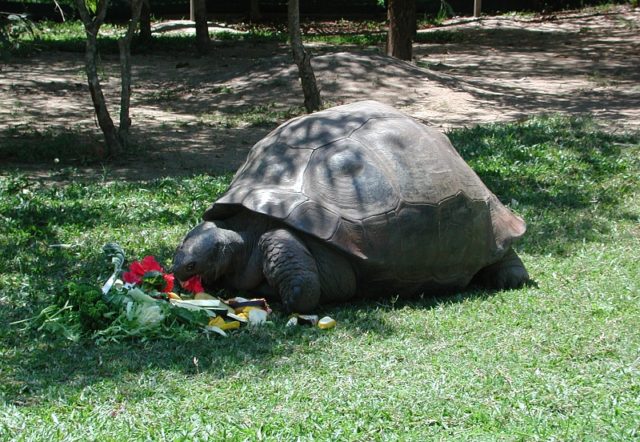It is believed that Harriet, the Galapagos Tortoise that died at Australia Zoo in 2006, was first collected by Charles Darwin when she was very young and no bigger than the size of a dining plate.
From the reported size, she hatched approximately in the year 1830. From her body shape scientists can conclude that she came from the island of Santa Cruz.

She did spend some time in the colder climate of England with Charles Darwin. Darwin wrote about the Galapagos Tortoise, and his observations led to his theory of evolution. There seems to be a lot of controversy about whether or not Harriet was Darwin’s Tortoise.
Captain Robert FitzRoy of the Beagle, the ship that Darwin sailed to the Galapagos, wrote a narrative of the journey that stated that they ate tortoise and that several tortoises made their way to England alive.
FitzRoy had a pair of tiny tortoises and monitored their growth over the following three months. Darwin himself noted that his assistant, Syms Covington, had one and that he himself had one from James Island (Santiago). So it is true that Darwin had a tortoise, though there is no evidence that it was Harriet.
For a long time, Harriet was believed to be male and had previously been called Harry. Her real gender was discovered in 1960 by a visitor from the Honolulu Zoo. Regardless her history, Harriet was still a magnificent creature and happily made her home until her final days at Australia Zoo. Before moving to Australia Zoo, Harriet lived in the Brisbane Botanical Gardens. She had lived there for over 100 years. From there she moved to the Fleay’s Fauna Sanctuary in the Gold Coast. Mr. Fleay raised her public profile through his writings, and she was prominent in some of his books.
For the last two decades of her life, Harriet moved to the Australia Zoo where she thrived under the care of the Irwins. She had a lovely enclosure that included a cave, a mud wallow, and a mixture of shade and sunshine. Her favorite treat were the red hibiscus flowers. She was described as a placid and affectionate creature, and it said she preferred humans over other tortoises. DNA testing proved that Harriet was older than any other tortoise in Australia by at least one generation.

She became an icon of wildlife conservation and could draw in large crowds. She was featured in many newspapers and television broadcasts, locally and internationally.
The puzzle of how she came to Australia has kept many enthusiasts busy for years, and today, Harriet is still considered to be a lady of the mystery as the investigations continue to piece together her early life.
